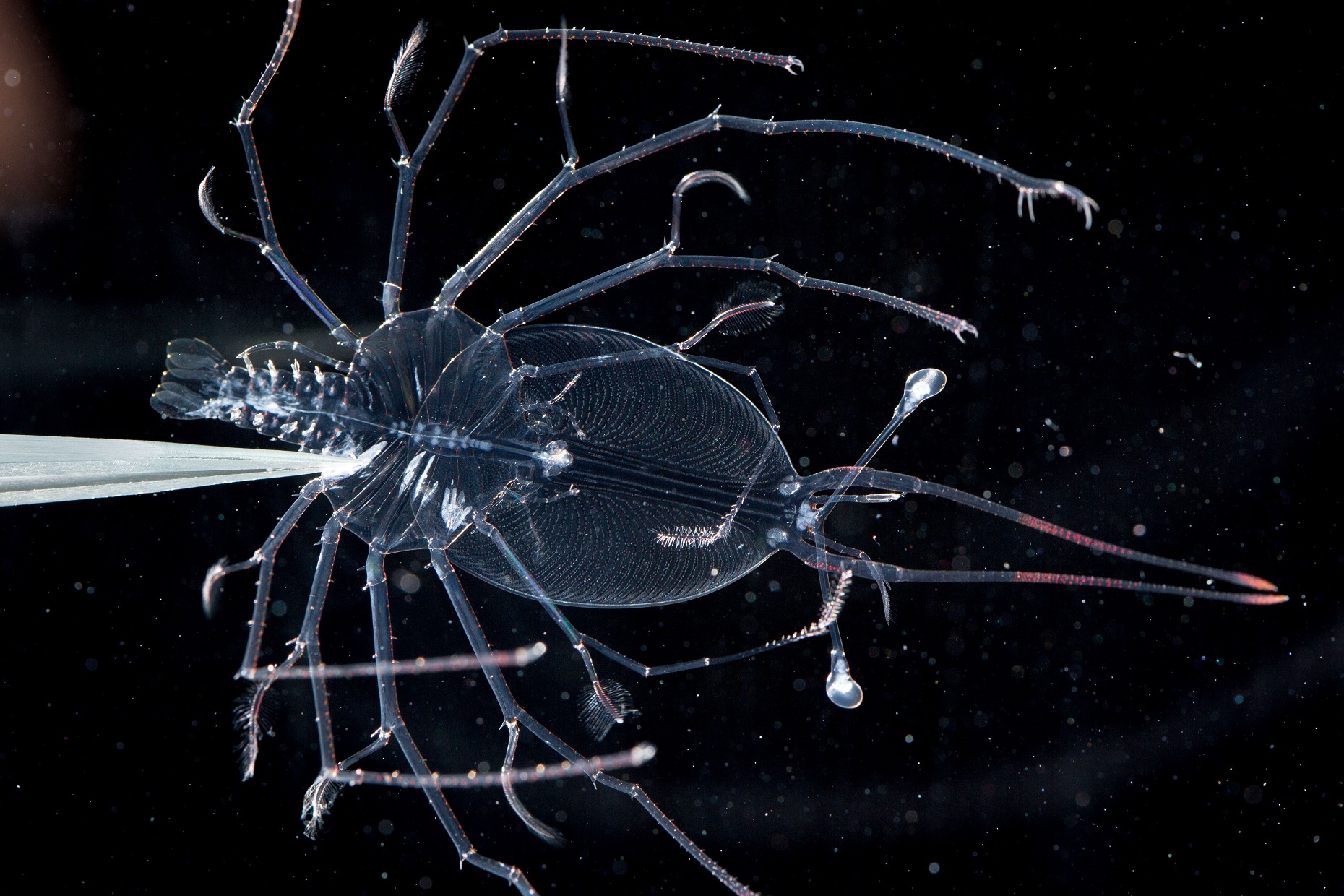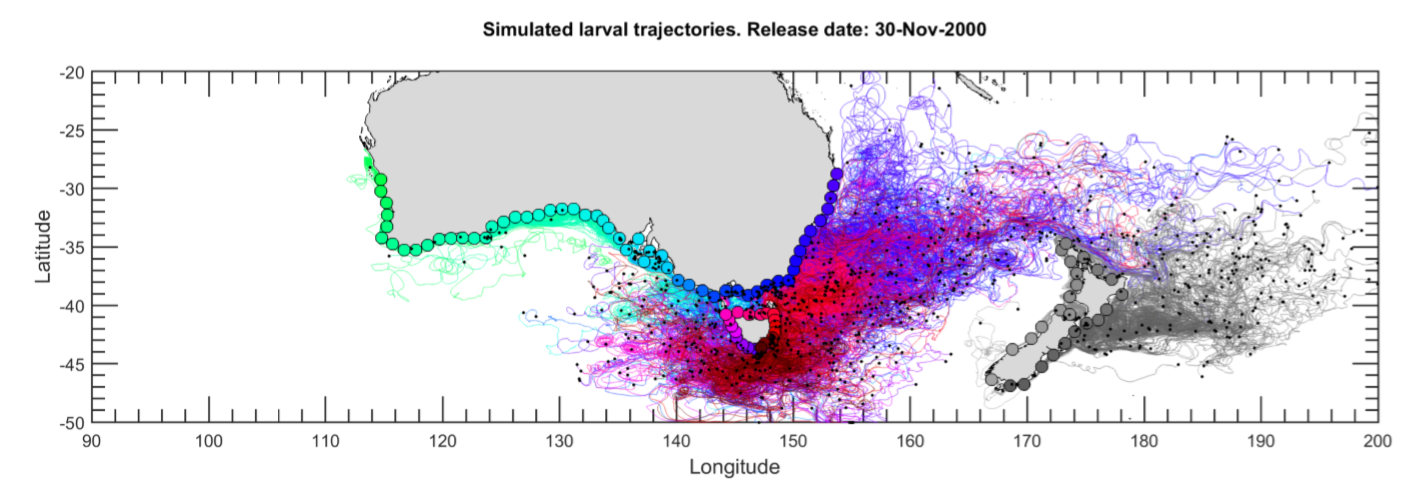Larval Dispersal Modelling

Puerulus larvae is one of 11 pelagic larval stages rock lobster complete before turning into juvenile lobster and settling on rocky reefs. Picture courtesy of Peter Mathew IMAS Taroona 05/11/2014.
The pelagic larval stage of the southern rock lobster’s life cycle is important for connecting populations over vast distances to maintain population structure, resilience and genetic diversity. Understanding larval dispersal is fundamental to interpreting spatial and temporal patterns in recruitment and the likely costs and benefits of changes in spawning stock biomass or altered harvesting strategies. However, understanding larval dispersal is difficult and requires complex process-based numerical models to simulate the oceanographic conditions over the vast spatial extent that southern rock lobster larvae can distribute at various times. Larval dispersal modelling for the southern rock lobster can improve the long-term sustainability of the fishery by integrating information on the connectivity of pelagic larvae with regional management practices. IMAS researchers are developing a southern rock lobster larval dispersal model that can be used as a decision-support tool for understanding and predicting population connectivity in southern Australia.
Larval dispersal modelling conducted by IMAS researchers indicate that there is wide-spread connectivity and movement across the southern rock lobsters’ range in the Australasian region. There is also a general eastward trajectory of larval dispersal during the pelagic life-stage with the prevailing currents. IMAS researchers are continuing to investigate the role of prevailing currents on larval dispersal patterns of the southern rock lobster.

Simulated trajectories of larvae released from 100 locations on the 30th of November 2000. The colour of trajectories varies with the larval release location. The location of larvae at the end of the dispersal simulation is marked with black dots. Roxana Vasile (2018) ‘Modelling the Larval Dispersal of the Southern Rock Lobster Jasus Edwardsii (Hutton, 1875)’ .



